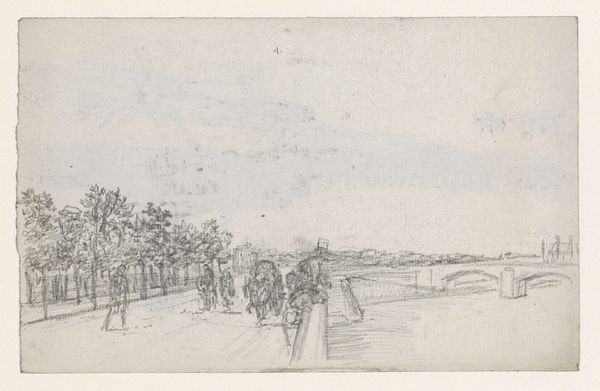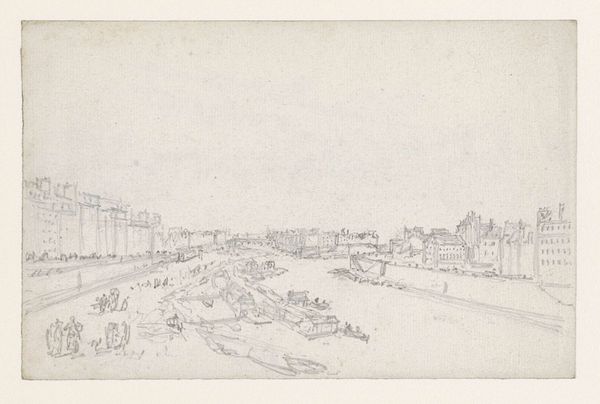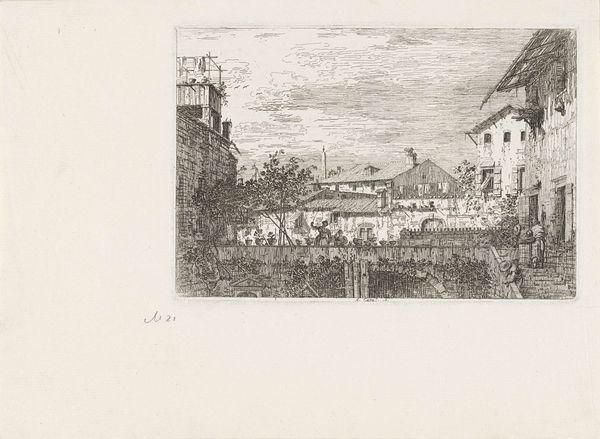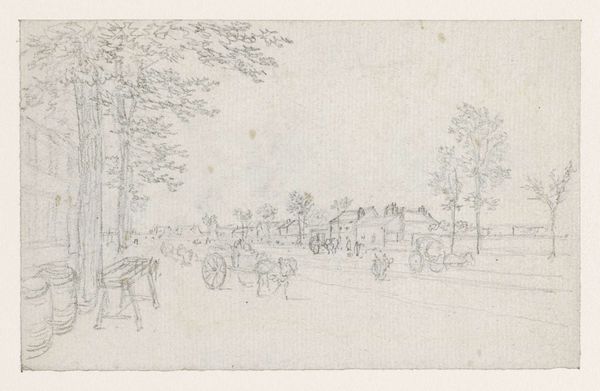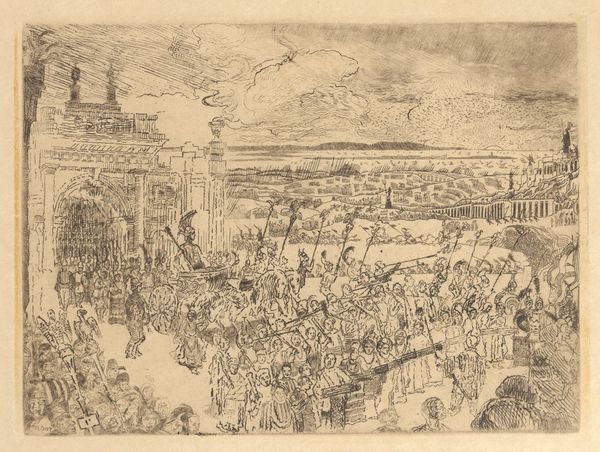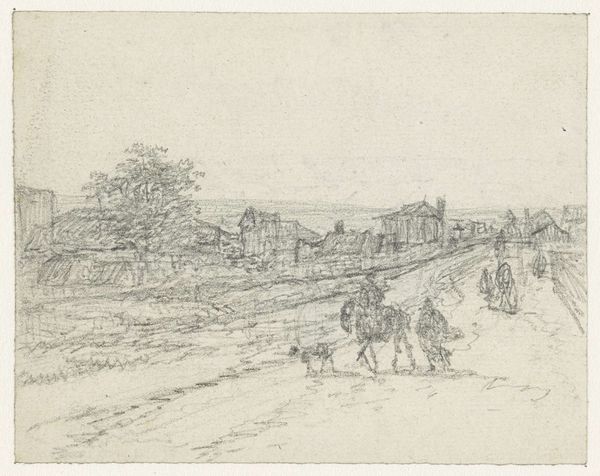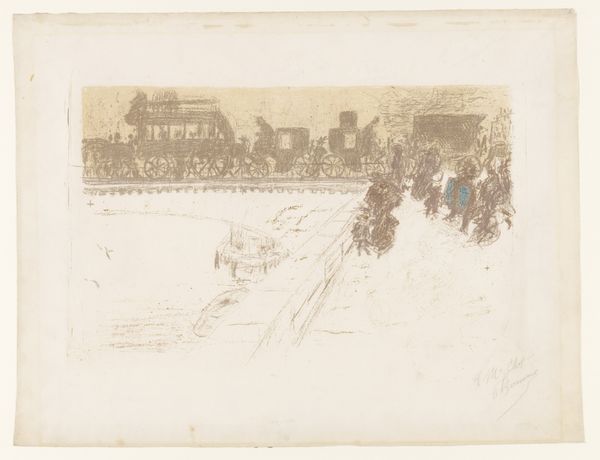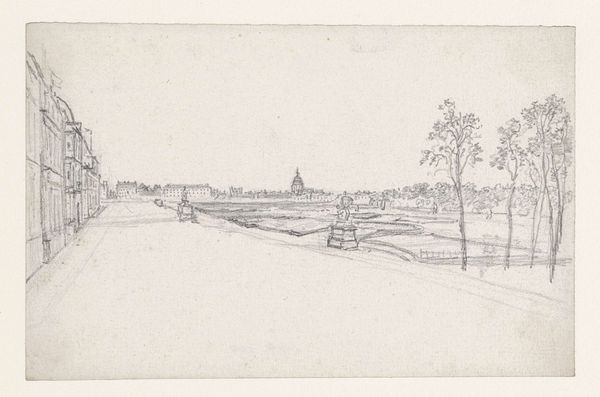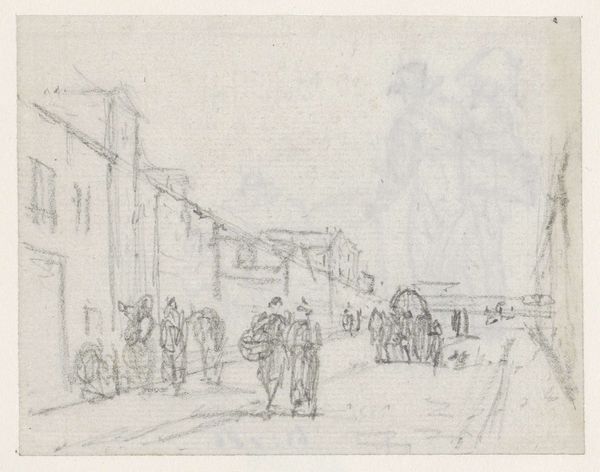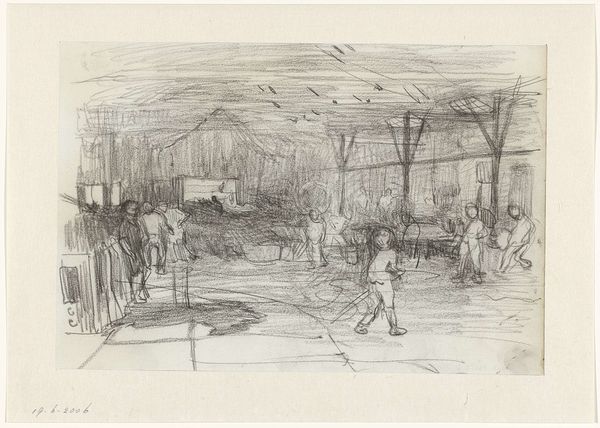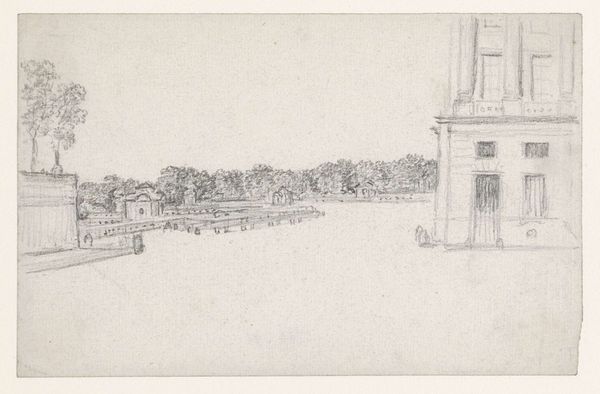
Gezicht op de quais naar de Pont des Arts en het Institut de France 1773 - 1843
0:00
0:00
drawing, pencil
#
drawing
#
landscape
#
etching
#
romanticism
#
pencil
#
cityscape
Dimensions: height 100 mm, width 155 mm
Copyright: Rijks Museum: Open Domain
Curator: This evocative pencil drawing offers a glimpse into 18th or 19th-century Paris. Titled "View of the Quais towards the Pont des Arts and the Institut de France," it is attributed to Georges Michel and likely dates from 1773 to 1843. Editor: Immediately, I notice a palpable sense of transience. The sketchiness adds to the feeling that this is a captured moment, figures fleeting across the quays. I also can't help but wonder how the urban environment of Paris shaped the very act of its artistic representation. Curator: An insightful observation. Notice how the architectural structures dominate the scene, imposing a very precise control over the very lives that are reflected in the streets, almost like an imposition, from their labor to their commute on horse carriages... How these lines of movement emphasize the importance of class. The materiality itself—pencil on paper—becomes significant here: a readily available, inexpensive medium, used perhaps to rapidly document or even categorize daily life for the city's upper-class citizens, to map its class, resources and productivity. Editor: The figures indeed seem almost dwarfed by the buildings. It’s interesting how, even in a city scene bustling with movement, there is still that air of Romanticism - a kind of melancholic reflection on humanity’s place within such grandiose and established structures. I keep noticing the repeating arch motifs everywhere that might symbolize passages into another kind of higher thought. The pencil, too, holds a certain symbolic weight; it's so raw, unfiltered—allowing Michel to communicate the cultural and emotional pulse of the Parisian streets through line and shadow. Curator: And that Romantic bent towards emotion over industry and production as reflected by such symbols may have played a major part in shaping the artist’s method here: look closely and note Michel’s strategic imprecision. His art lies not in accurately portraying the reality, but also on the raw, ephemeral nature of existence within it. The city buildings stand almost monumental as signs for wealth creation from manufacturing that contrasts to these ephemeral citizens going by with horse and carriage. Editor: Yes, exactly, that the cultural memory is as sketched or ephemeral as it truly remains. So what seems permanent might not necessarily hold such lasting qualities; or more optimistically, change may be an unremitting constant that promises an ever-better reality. It seems even this very artwork offers more than just a single, material way to interpret the city, as its materialist reality and symbolism is constantly evolving even as we talk about it right now. Curator: And that makes the question that even more relevant: How do the city streets shape society's values and goals? And I think these two themes intertwine beautifully here, prompting us to view art as both social commentary and symbol in the industrial-scape and romanticized urban landscape. Editor: I concur. A stroll through the ages, rendered with just pencil and paper that keeps us in thoughtful step along the quais.
Comments
No comments
Be the first to comment and join the conversation on the ultimate creative platform.
